Some rooms in the house do not always need interior doors. If the zone is not private, it does not have to be closed. Free doorways in the living room, kitchen, hallway allow you to combine rooms and expand the space. This is due to the elimination of the dead zone intended for opening the sash. However, the question arises - how to close the doorway instead of the door in order to visually separate one functional area from another.
Content
- Features of an interior without doors
- Advantages and disadvantages of an opening without a door
- When can you do without doors?
- Doorway design ideas
- Fabric curtains
- Filament curtains
- Bamboo and wood curtains
- Blinds
- Roller blinds
- Wood paneling
- Decorative panels
- Decorative tiles
- MDF and plastic panels
- Anti-mosquito curtains with magnets
- Ways to close a doorway instead of a door
- False door
- Hidden closet in the doorway
- Built-in wardrobe
- Doorway decoration: niche with shelves
- Secret door
- The choice of material for sealing the doorway
- Brick
- Plasterboard
- Conclusion
Features of an interior without doors
A doorway devoid of a door is a popular design trick. This is a practical and fairly budgetary way to increase the usable space and use it more intelligently. By choosing the right finish, you can turn an ordinary opening into a spectacular and unique interior detail.
In what cases will such a method be relevant?
- Separate the cooking area from the living area if necessary.
- When zoning large areas.
- When combining adjacent rooms.
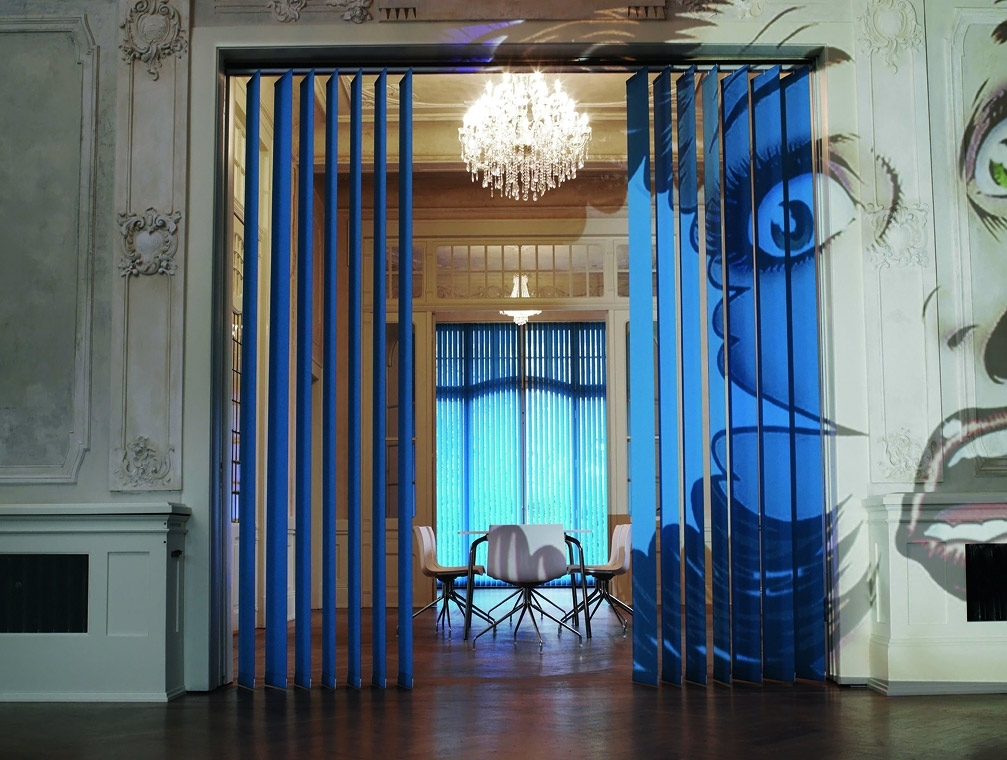
Advantages and disadvantages of an opening without a door
The free doorway, uncluttered by doors, has a sophisticated and stylish look. A similar design is used both in small two- and three-room apartments and in large-sized cottages and mansions. Let's figure it out - what is the advantage of such a solution?
Pros of abandoning interior doors:
- Visual expansion of space, which is a significant advantage in small apartments. The absence of an obstacle in the form of a door between the dining and kitchen areas, the entrance and the living room, allows you to move and maneuver faster and more freely.
- The unused area behind the open door leaf is freed. With the canvas removed, in this place you can place any piece of decor or furniture. For example, a vase, a column, a curbstone.
- A zone is formed that can be advantageously decorated using a variety of materials. There are plenty of options for decorating the opening.
- Passages decorated in the same style create a sense of a holistic interior ensemble.
- Free air circulation is provided, which is very important in the heat.
The main disadvantage of unlimited space is the impossibility of being in a private atmosphere. But this problem can be easily solved with a variety of curtains. And if the apartment has a more secluded place - a bedroom or an office, it is better to retire and restore peace of mind in such a closed room.
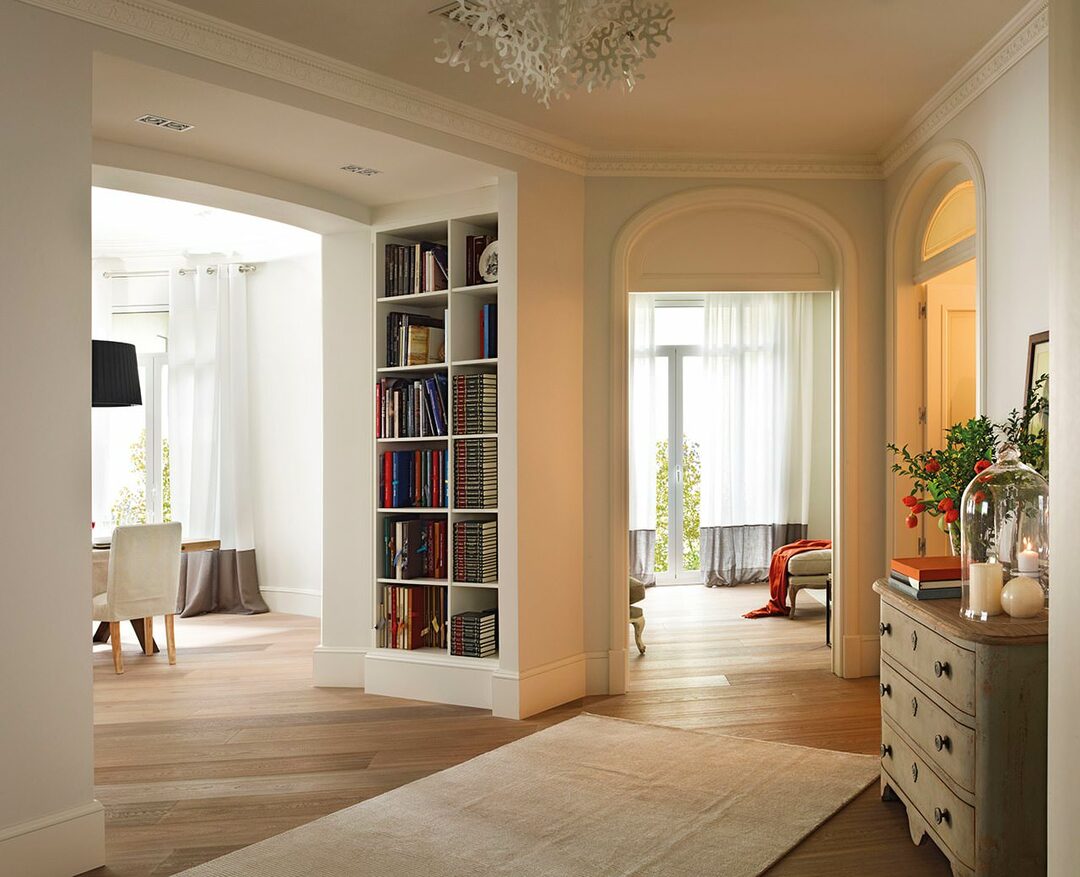
You can also highlight the following disadvantages:
- lack of a noise barrier;
- fragrances will spread throughout the home;
- unhindered penetration of drafts.
When can you do without doors?
Not every opening in the house can be deprived of a door leaf. It is difficult to imagine an open passage to a bedroom, study or storage room. However, in this case, you can do with sliding partitions, screens, curtains, and with their help create an intimate atmosphere. As a result, the visual separation of rooms will be implemented and privacy will not be affected.
The door leaves are removed if it is necessary to combine:
- kitchen and living room;
- living room and corridor;
- kitchen or hall with a loggia;
- bedroom with dressing room.
The rectangular shape of the opening can be preserved and made more interesting with spectacular finishes. Often, apartment owners give preference to arched openings of the correct and irregular shape. Asymmetric variations, round, triangular and trapezoidal portals are in high demand.
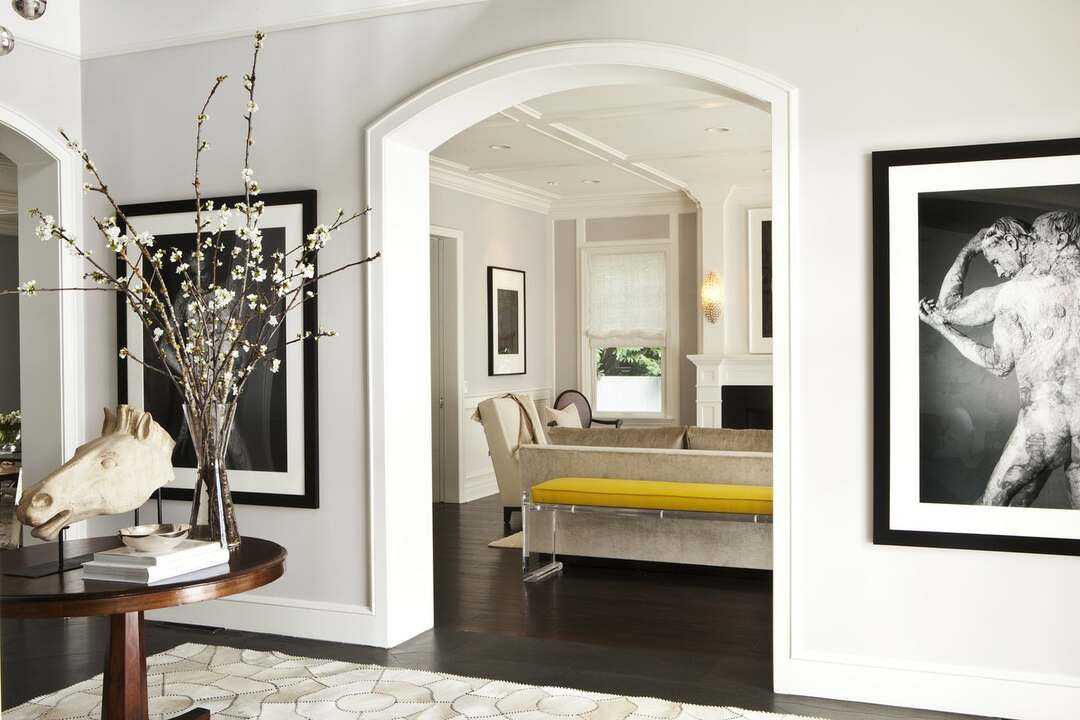
They refuse door panels if they plan to arrange a passage using stained glass and mosaic modules, a bar counter. Especially often, such techniques are used in studio apartments.
As a rule, the decision to abandon the doors is associated with the need to redevelop the premises. To create a similar design, use:
- expansion of an existing opening;
- creating a new one.
The open passage in the load-bearing wall allows the space to be combined while maintaining the rigidity of the building structure.
Doorway design ideas
The market offers a huge selection of materials for the design of free door portals. If you cannot find products that fit optimally into the interior, you can make them yourself from scrap materials. You can use any materials that are used for wall decoration. The cheapest option is plasterboard structures, the finish of which can be paint or wallpaper. This finish is especially relevant when installing sliding systems or making an asymmetric passage. Plastic or MDF panels are also inexpensive. The most expensive materials used to decorate doorways are stone, ceramic tiles, valuable wood, and gypsum stucco molding. As an alternative to the door leaf, you can use curtains from a wide variety of materials, blinds, mosquito nets.
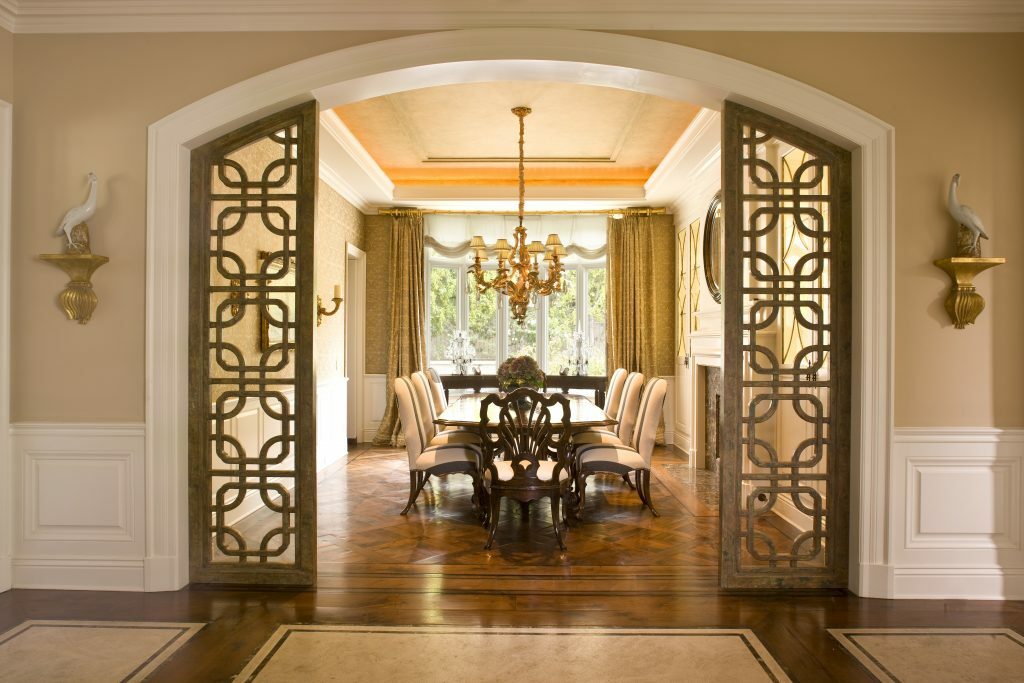
When choosing material for this type of work, it is necessary to take into account the general style of the interior. The design should organically fit into the design of the room.
Fabric curtains
Textiles are one of the most popular space dividers used to decorate a doorway. They add freshness, style and beauty to the interior. The main advantage of curtains is that they are an excellent decor and a continuation of the design concept. Correctly chosen color, print and texture of the canvas are the key points that allow you to maintain the style of the room. Designers recommend using multiple panels to create an interesting composition. Do not forget about accessories for curtains - grabs, tassels, decorative cords, lambrequins.
With the help of such a decorating technique, it is good to decorate open spaces - if it is necessary to combine the room, the curtains can be easily pushed back and fixed with grabs.
To create curtains, you can use both natural and synthetic fabrics. The first option is especially popular. Curtains made of cotton, linen, silk, satin, satin look expensive and emphasize the status of the owner of the apartment.
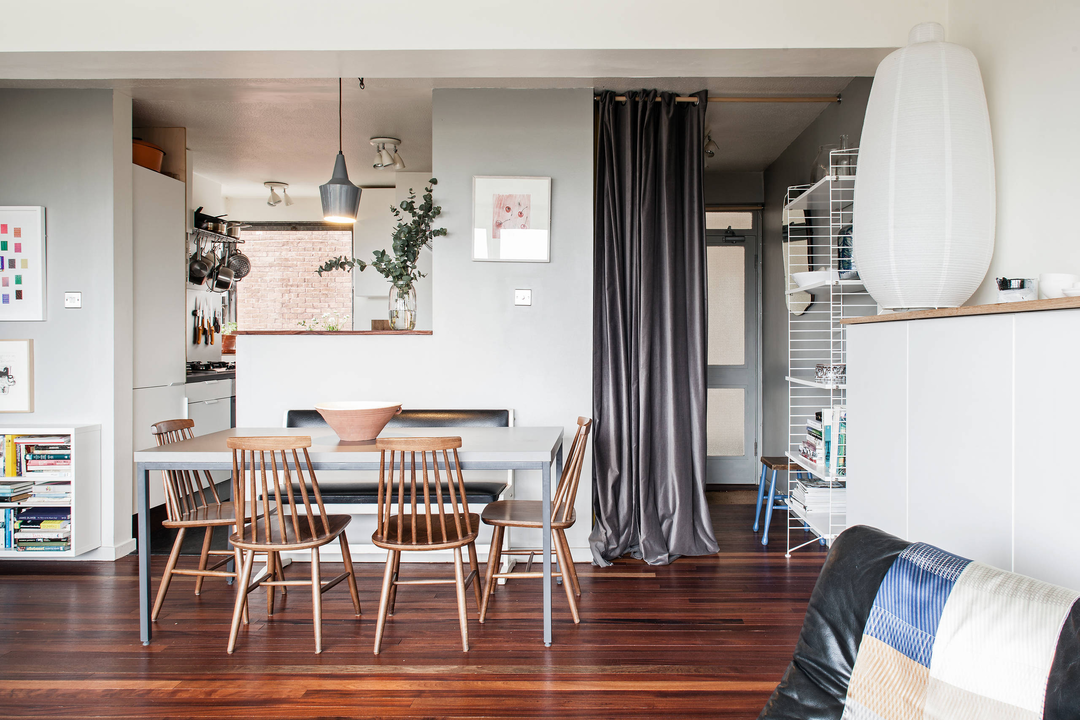
If it is necessary to ensure a sufficient level of thermal insulation, it is necessary to choose the densest curtain fabrics. All light and airy materials serve only a decorative function.
To fix the curtains, use ordinary window curtain rods or metal tubes attached to the wall above the opening. In the latter case, the curtains must be equipped with:
- eyelets;
- strings;
- loops.
The tubular cornice should be easy to remove so that the curtains can be washed regularly.
Filament curtains
If you want to create a beautiful and extraordinary design of interior portals, you can use thread curtains. They are made from a wide variety of synthetic cords. From above, the threads are united, and their ends hang freely. Such curtains can be used as an independent interior object or as a compositional element in combination with other materials.
Thread products are made from high-quality polyester, which allows them to retain their shape, integrity and attractive appearance.
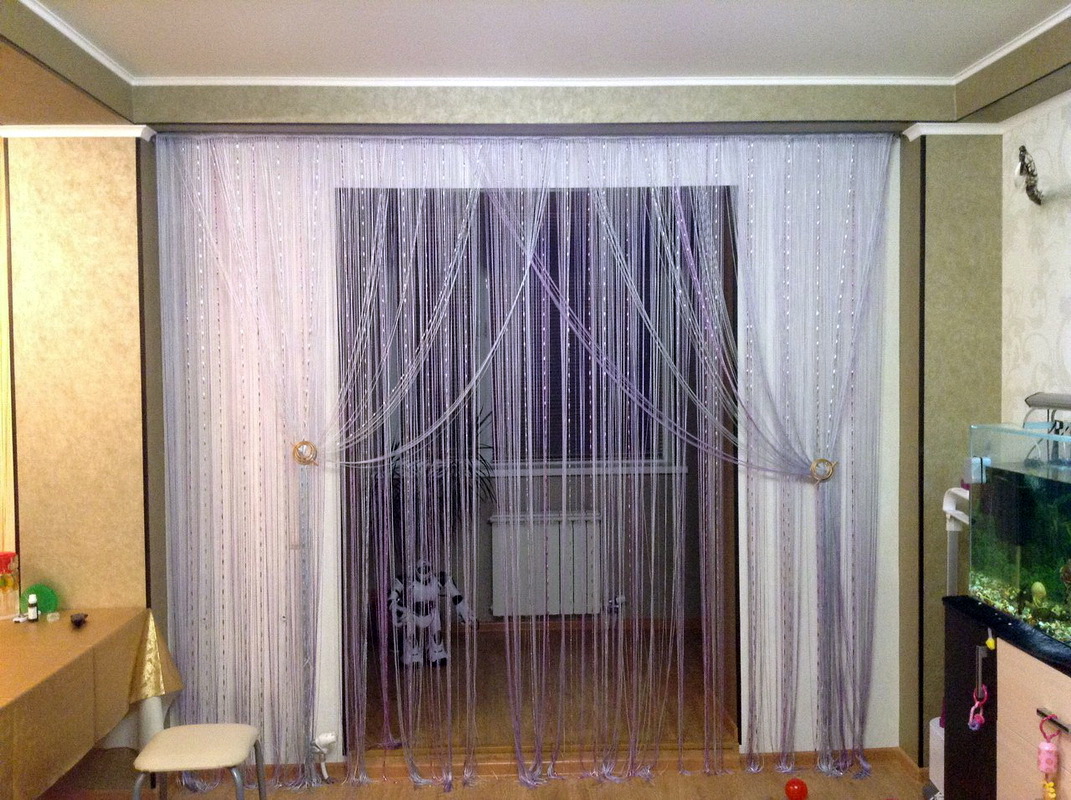
The material possesses:
- excellent light transmittance. Since the canvas is not continuous, it cannot effectively block the passage of sunlight. This is ideal for poorly lit rooms on the north side;
- low weight - the load on the cornice is minimal;
- transparency - visually make the room more airy;
- versatility - they look great in almost any style, both classic and modern.
Thread curtains can be decorated with lurex, beads, glass beads, large beads, which makes them even more attractive.
Bamboo and wood curtains
Curtains made of bamboo sticks or pieces of wood look great in the interior opening. Individual elements are painted in a specific color. It is possible to apply a large pattern to the entire canvas. The bamboo doorway curtain consists of approximately 100 bamboo beads. Sticks and pieces of wood are connected together with staples or wire. You can string them on fishing line or cords. In this case, after each fragment, a metal stopper must be installed to prevent it from slipping. The degree of transparency of the canvas depends on the size of the intervals for placing the beads.
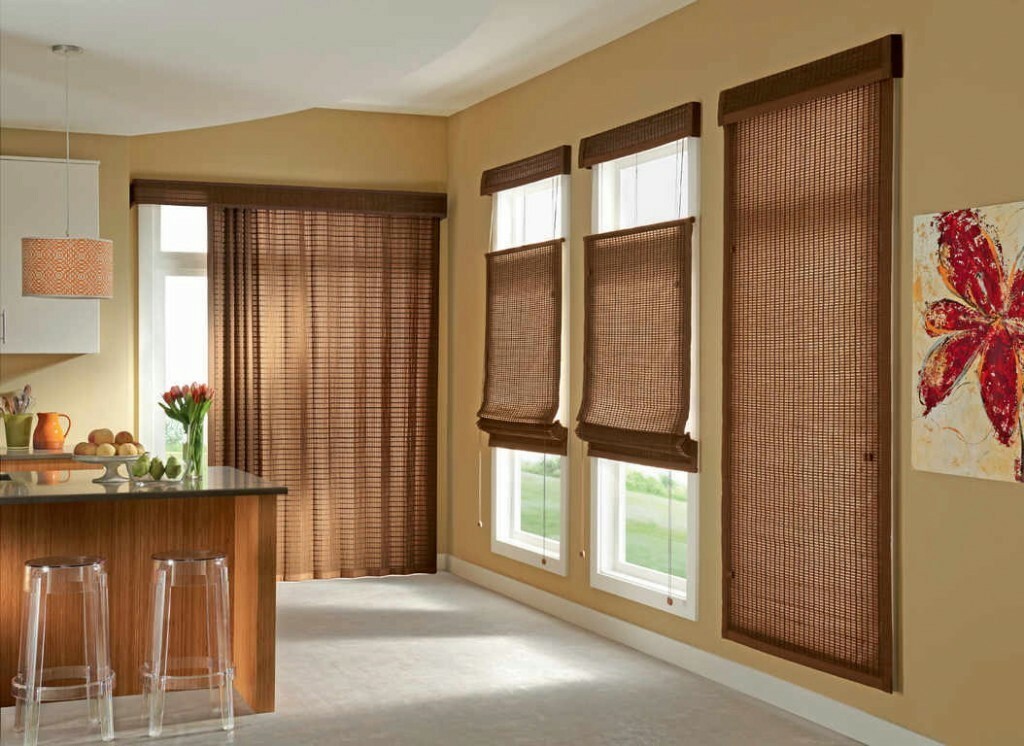
These curtains are not durable enough, so they should not be used if small children and pets live in the house.
These curtains will be more comfortable if placed only at the edges. You can hang short threads in the center, which will not impede movement.
Fixing such curtains is easy. You need to nail them to the bar located above the opening.
Blinds
Correctly selected blinds are an excellent solution for decorating a passage. Models with drawings decorate the room very much. The advantage of blinds in easy maintenance - they can be easily wiped or washed. Standard window models will not fit in size, so products for doors will have to be ordered. The color palette of the material is very diverse, which allows you to choose products for any room design. You can combine several colors and make an original composition.
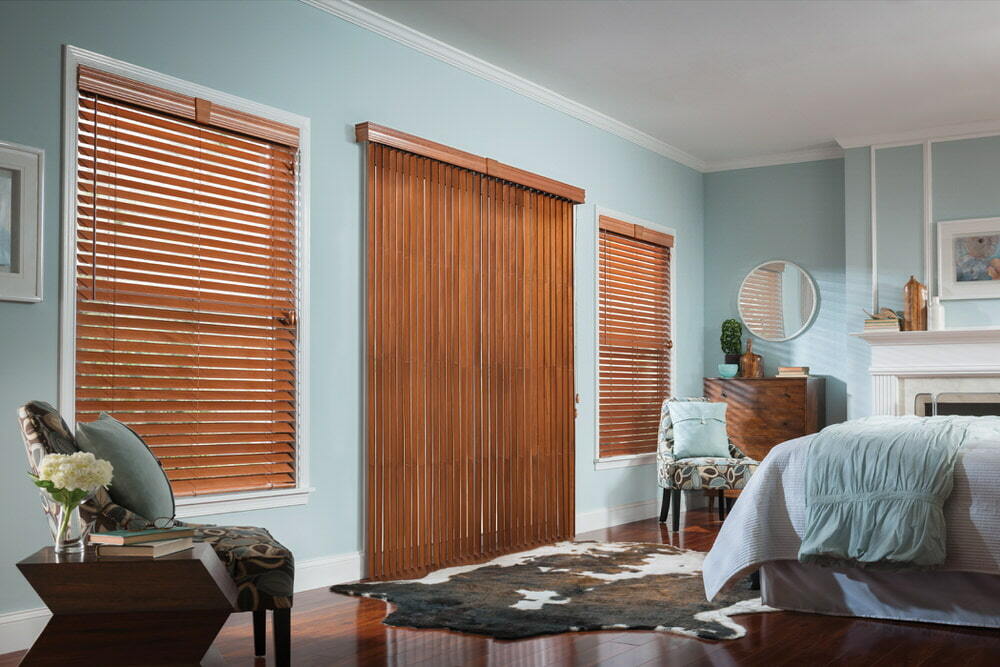
With high traffic, it is better to use vertical products - they are easier to move. If the room is visited infrequently, horizontal counterparts can be purchased.
Roller blinds
The material of a properly installed curtain adheres tightly to the door portal, so this type of curtain is very convenient. The material is very diverse in terms of stylistic focus and suggested dimensions.
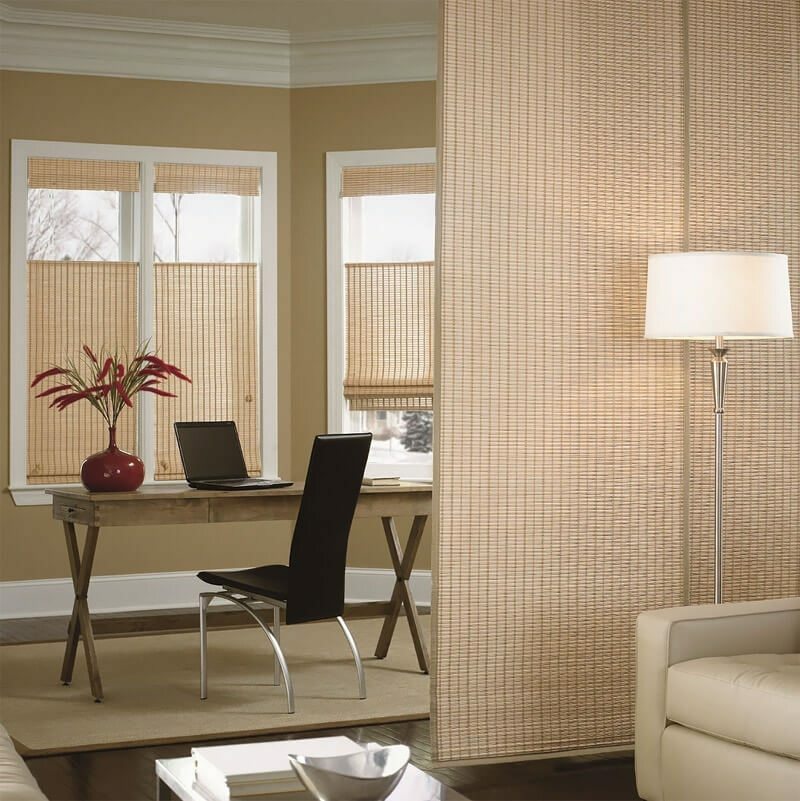
The products are equipped with a weighting agent, due to which they maintain a stable position when closed. The only inconvenience is that the lifting of such a curtain takes a sufficient amount of time, so it will not be possible to quickly leave the room. Although, if you close the canvas only at night and keep it open during the day, this inconvenience is not felt.
Wood paneling
Such decoration is an integral part of most historical styles. For decoration, oak, ash, pine, hornbeam wood is used. Parts can be purchased ready-made. During installation, they are fixed with nails or self-tapping screws.
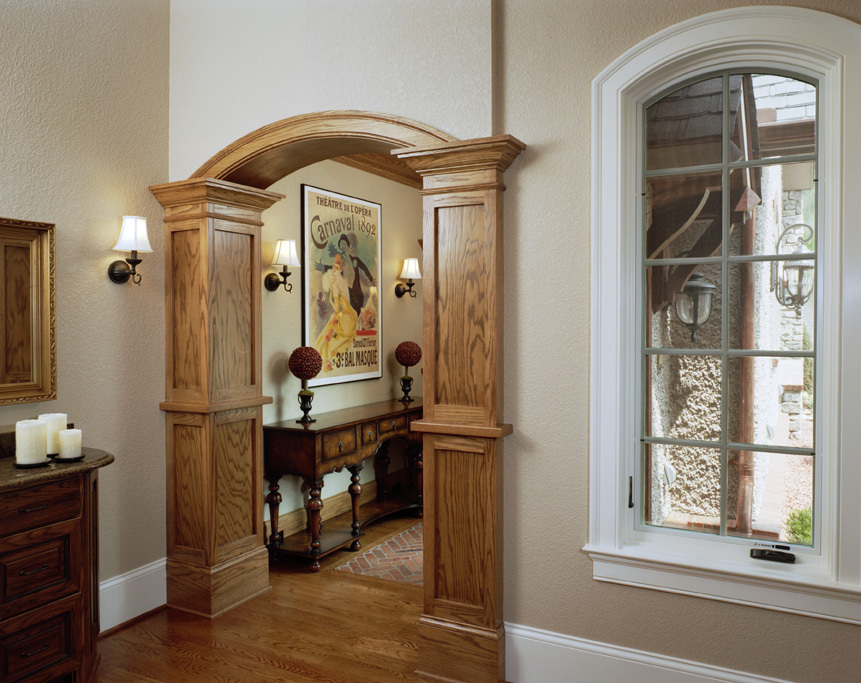
Decorative panels
A decorative cornice protruding above the opening can become an excellent decoration for classic interiors. It is called "sandrik" and consists of stucco elements - moldings, bas-reliefs, may contain fragments of statues. For this decoration, plaster and polyurethane varieties of material are used.
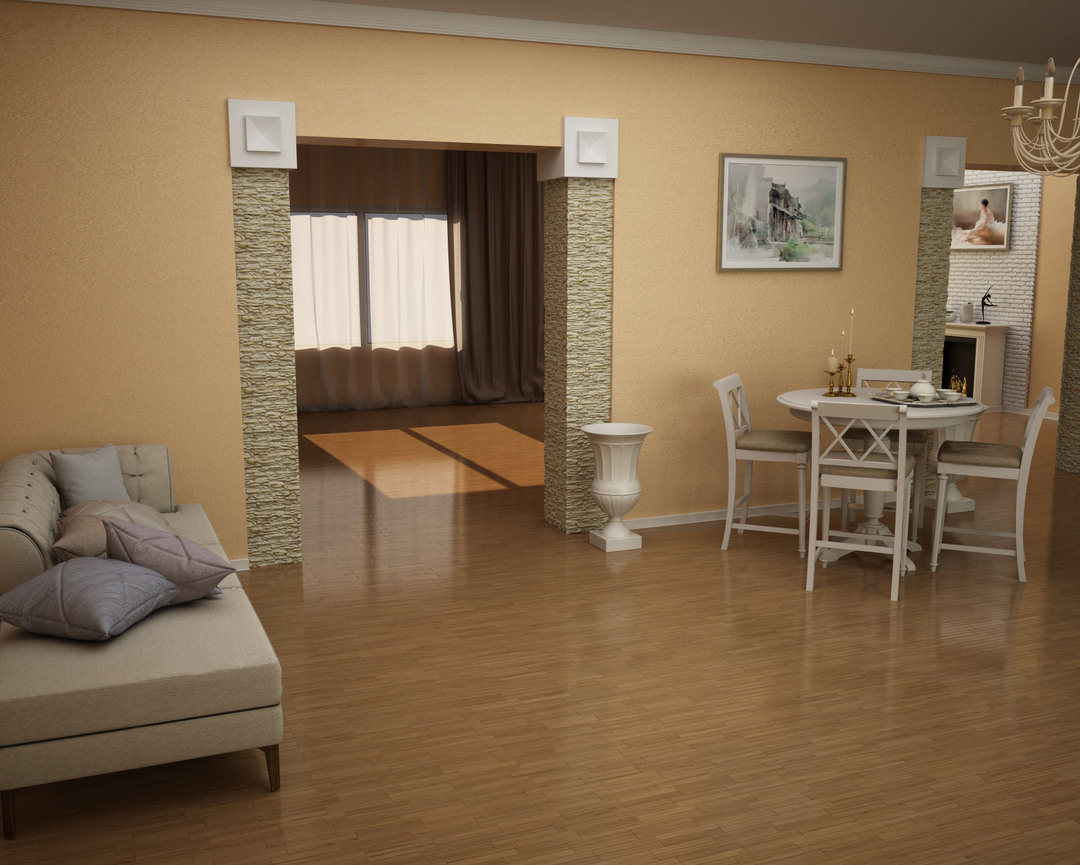
Decorative tiles
Such cladding is significantly heavier than polyurethane and wood. At the preliminary stage, the walls must be leveled with putty. The glue is selected depending on the size of the tile. Lightweight modules can be attached with liquid nails. For weighty options, you will have to prepare a special adhesive mixture. They begin to veneer from the bottom, with breaks for setting each row. The seams are filled with grout in the color of the tiles or contrasting. In addition to tiles, you can use artificial stone or clinker tiles. The mirror design will look great, which will further expand the portal and fill the room with light.
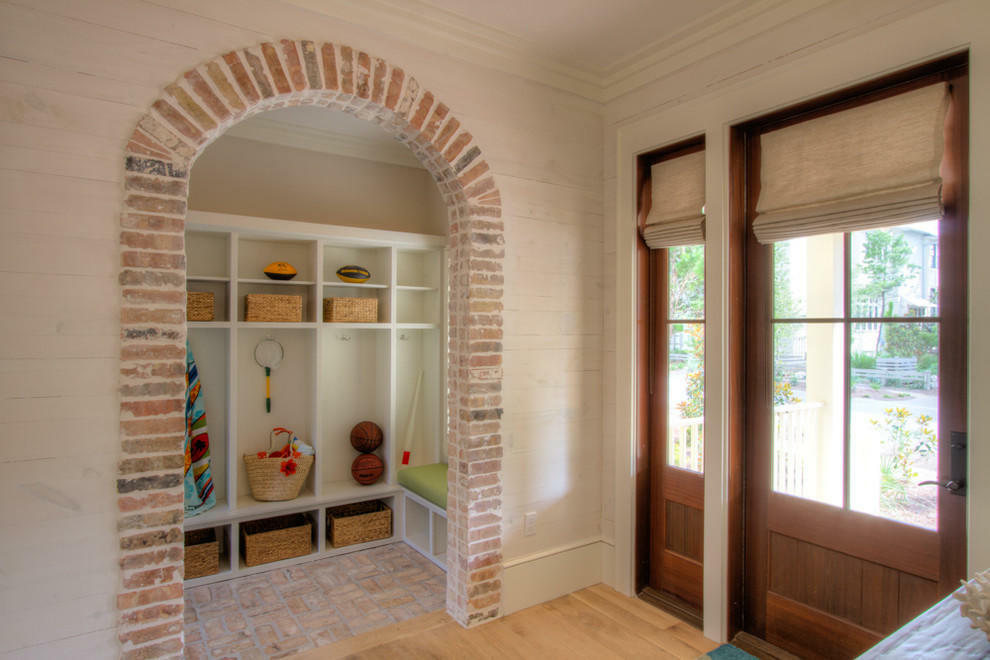
MDF and plastic panels
With MDF panels you can create excellent and affordable finishes. It is only necessary to select additions and platbands that are similar in shade. Among the disadvantages of such a cladding, one can single out the weak moisture resistance of the material. Therefore, it is better not to decorate the passage to the kitchen with MDF plates. However, with a good hood, dampness will not threaten the integrity of the finish. It will also protect neighboring rooms from the penetration of food odors. You can also protect the material with self-adhesive tape.
Plastic panels, on the other hand, are ideal for decorating the passage to the kitchen, as well as to the hallway, where there is a high risk of mechanical damage.
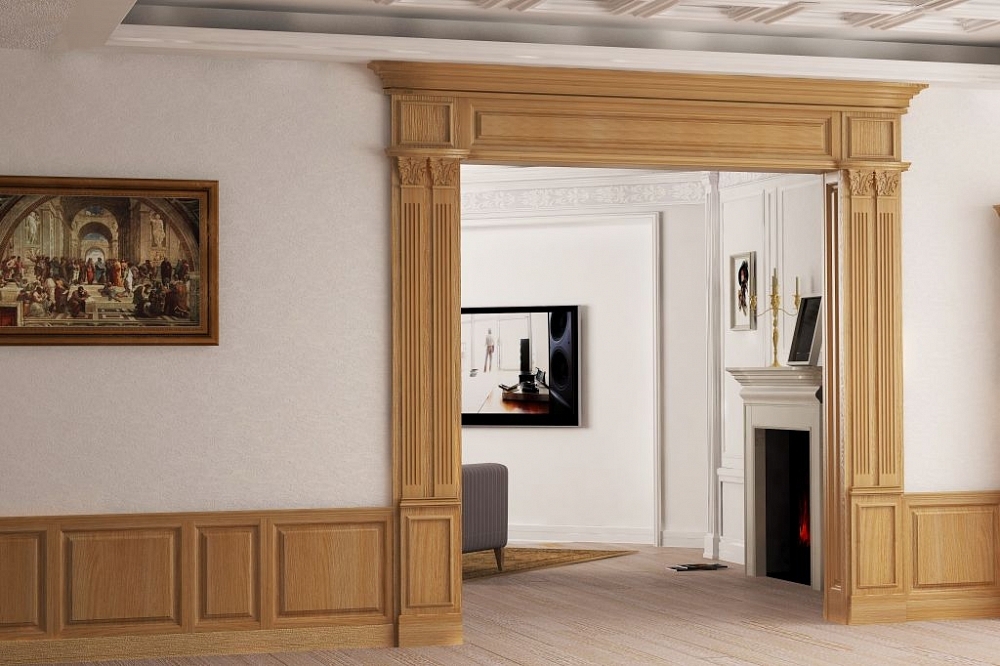
The panels are fixed with glue or wooden battens. They can be easily cut with a hacksaw. Of the advantages of the material, a variety of colors and textures can be distinguished.
Anti-mosquito curtains with magnets
Mesh curtains are indispensable in the summer when you need to protect yourself from dust and insects. They do not create obstacles to air currents and easily open just by passing through them. The curtains are connected with a magnet that automatically closes after a person passes. It's incredibly convenient if your hands are full.

Ways to close a doorway instead of a door
When embarking on a grandiose redevelopment, do not rush to lay all the doorways that seem superfluous at first glance. We propose to consider one of the options for their application.
False door
A non-standard solution that gives the interior originality. The door turns into a "snag". The passage is closed on only one side. Such a technique will allow you to play a trick on the guests and deceive the checking services. Such a door can be used for stickers, as a highlight of a special area - for reading or work.
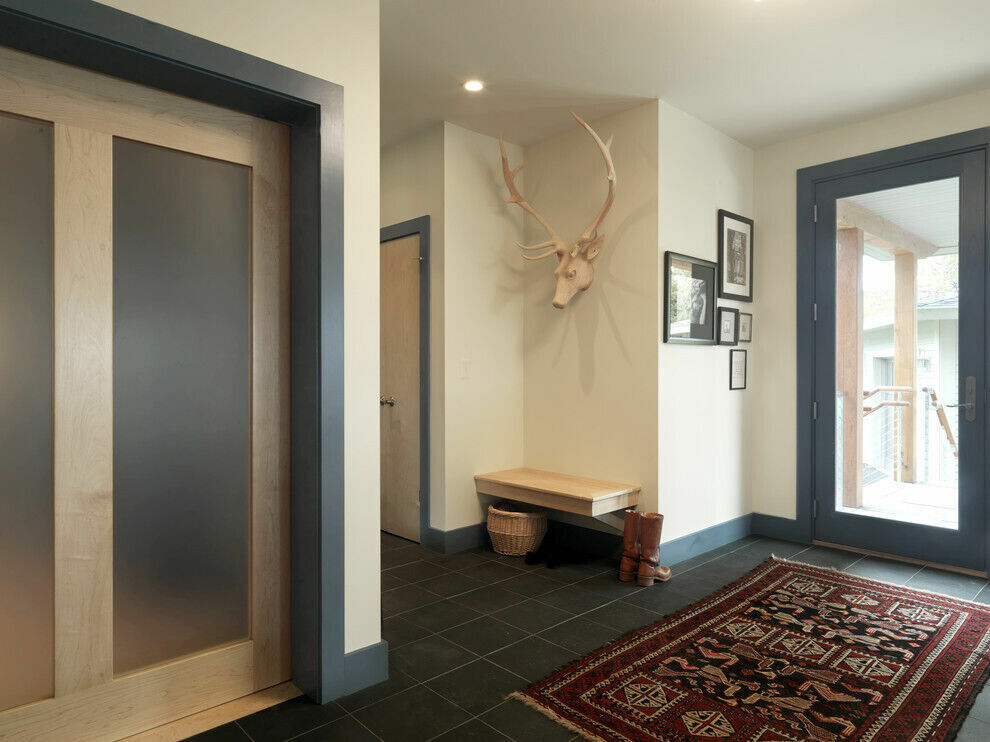
Hidden closet in the doorway
A wonderful option that does not require complex execution. The door along with the jamb remains in place, and the opening itself is deepened as much as possible. The result is a small storage. It can be equipped with shelves and stored here preservation and other necessary things - needlework kits, old toys, dishes. Among the disadvantages of this solution are the following:
- the niche cannot be made deep enough;
- if a ledge forms into another room, you will have to beat it.
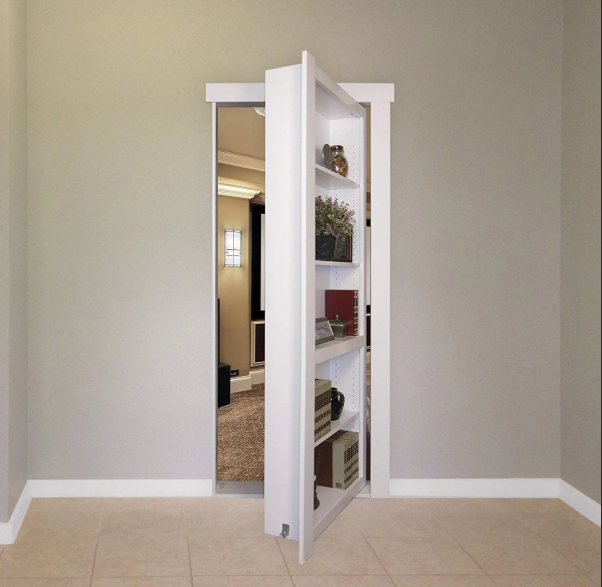
Built-in wardrobe
The space deepens due to the adjacent room. It is better to give preference to a glass door. The shelves should be mounted over their entire height. You can store here sets, cosmetics, jewelry, books, and various decor. The filling depends on the location of such a cabinet.
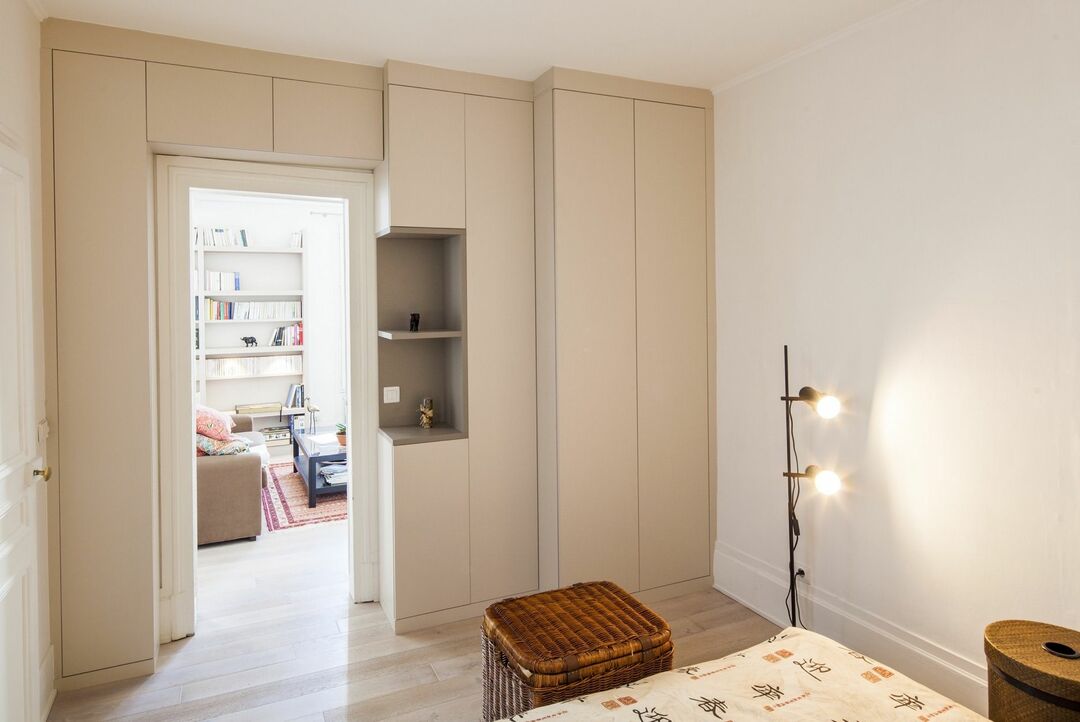
Doorway decoration: niche with shelves
Usually, a lot of effort is required to install a decorative niche. We have to create a drywall construction, which is mounted on a metal frame and “eats up” the space well. An unused doorway can successfully act as such a niche. To do this, you will need to dismantle the door - in whole or in part - leaving the lower part. In the resulting space, you can organize shelves and build lighting.
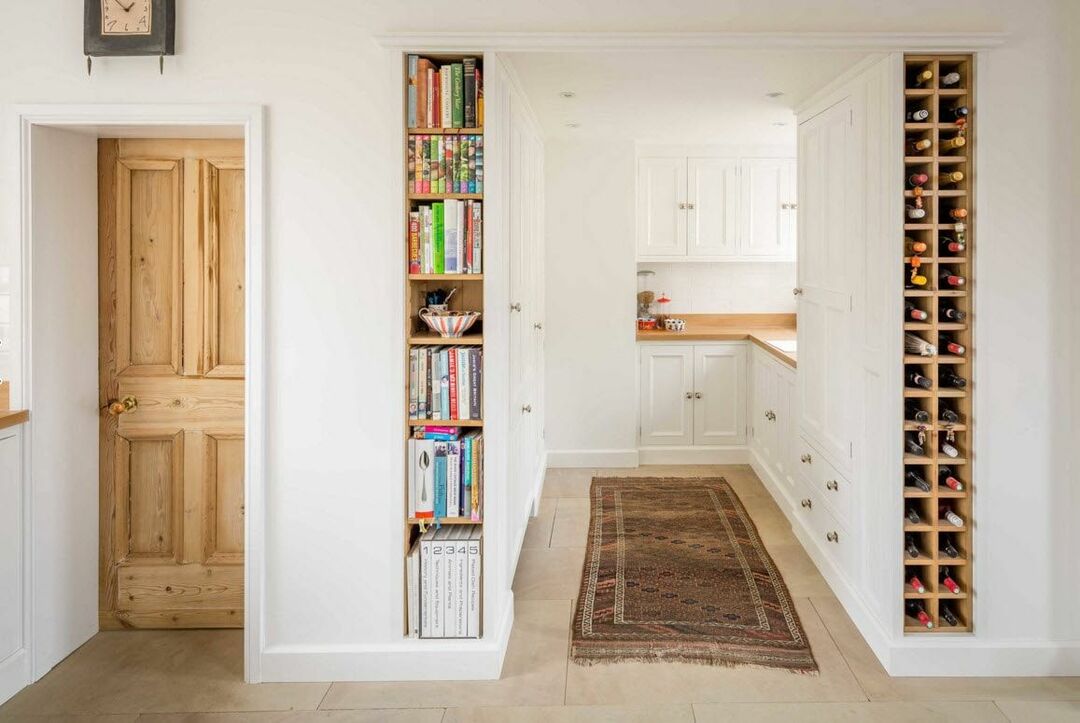
Secret door
An interesting extravagant solution that will undoubtedly make your home mysterious and exotic. A secret door can be used to disguise a room where you do not want to admit strangers. Hidden behind a shallow sliding cabinet, it will remain a mystery to your guests. None of them will guess what is really hiding behind a small shelving of books or decor.
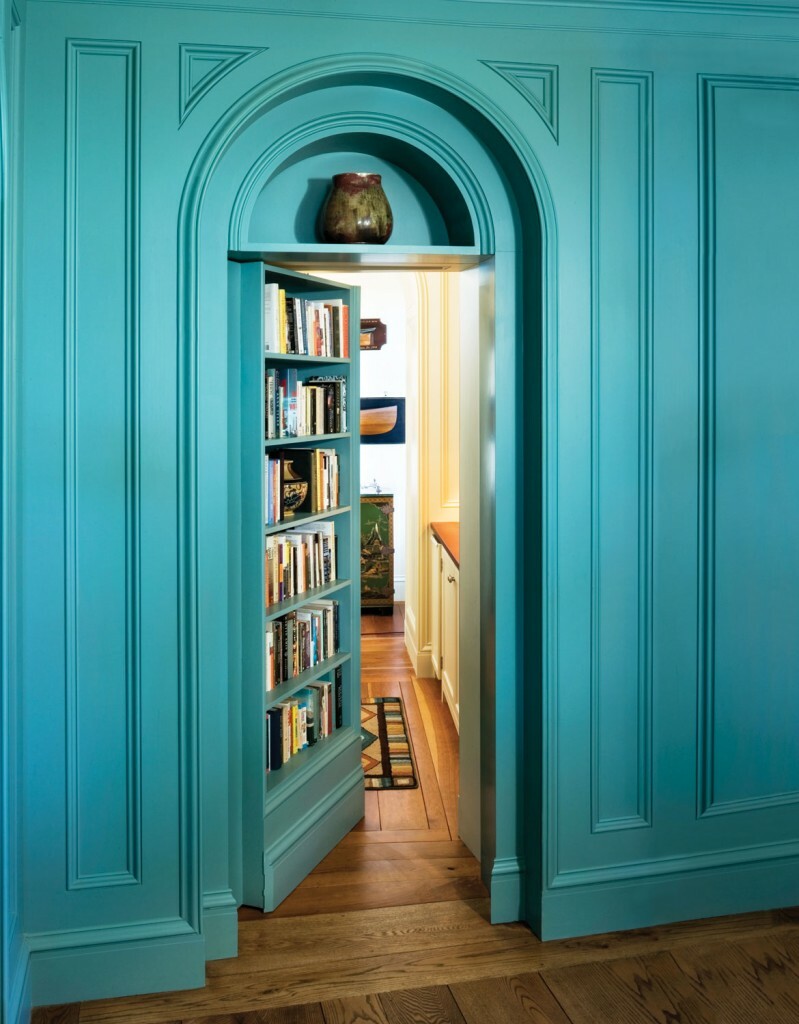
The choice of material for sealing the doorway
If you don't plan on using the doorway as storage space, you can seal it up. In this case, you will have to decide the question - what material to choose for this purpose.
Consider the following options:
- brick;
- drywall.
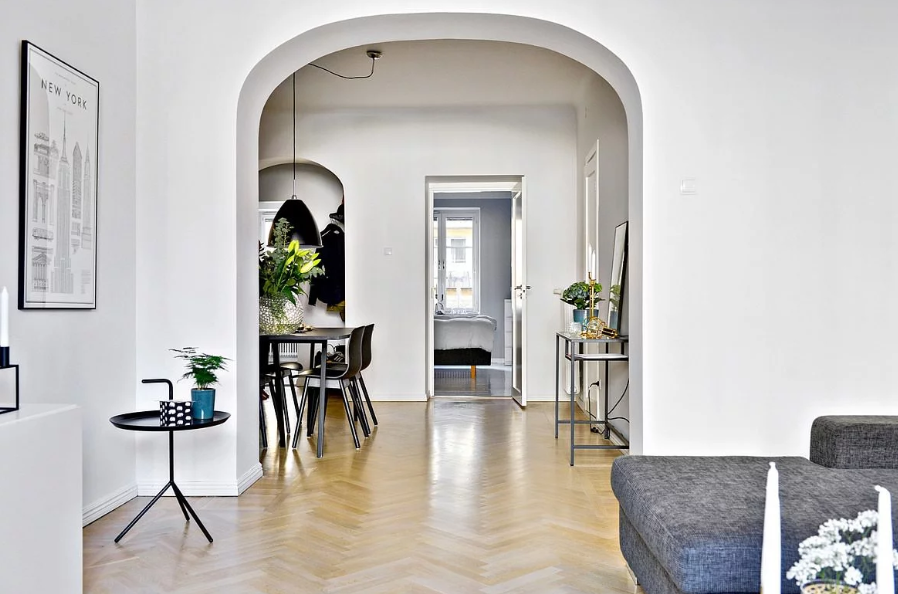
Keep in mind that a permit must be obtained to completely eliminate the opening.
Brick
Brick has undeniable advantages as a basic material for filling passages. It can be used for bricking openings both in load-bearing external walls and in interior partitions. And it doesn't really matter if these walls are made of reinforced concrete panels or bricks. However, we note that the openings in panel houses are unlikely to be allowed to be moved. But when a room has two entrances, one of them can be completely abandoned. There are also buildings where there is a section in the bearing wall that can be knocked out and thereby form a new portal.
The disadvantage of using bricks in aerated, asbestos-cement or gypsum structures is that the thickness of half of the brick does not correspond to the thickness of the wall. Therefore, drops are formed, which have to be corrected with plaster. This creates certain problems. You can also try to lay the brick on the edge, which is important for thin partitions up to 8 cm. The difference with this method will be only 1 cm.
Such a drop can be easily removed by increasing the thickness of the plaster layer. If the wall thickness is 9-19 cm, you need to take a one-and-a-half brick with a height of 80 cm and, similarly to the previous option, lay it on the edge. In this case, the thickness of the patch should be less than the thickness of the main structure. The main thing is that the masonry does not protrude beyond the surface plane. This will significantly reduce the consumption of the plaster mixture.
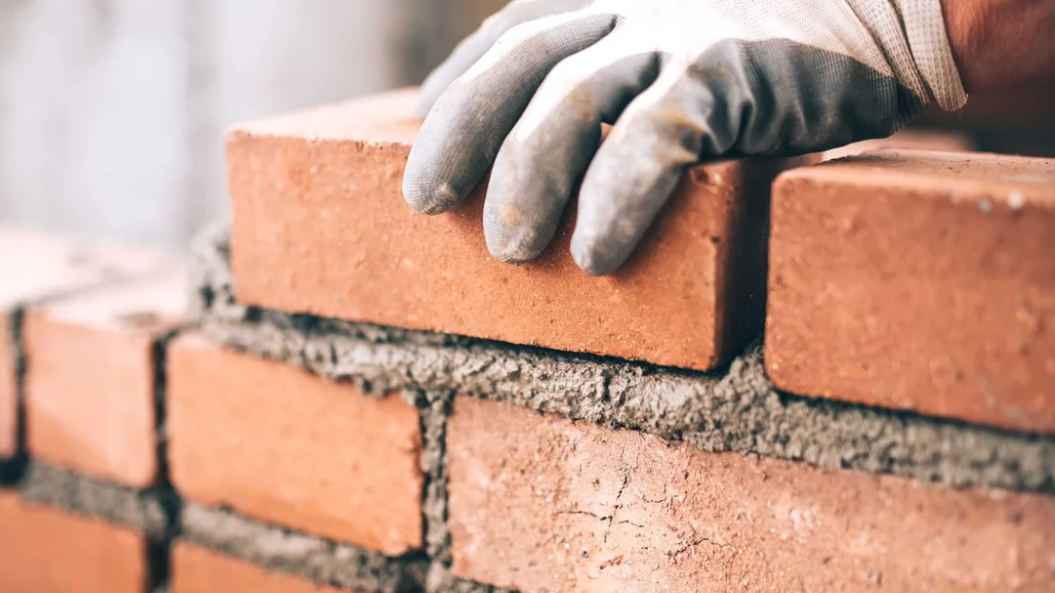
Before proceeding with the laying of the passage with piece material for masonry, it is necessary to start preparing the base and end surfaces. There should be no sill or flooring residues underneath. Ideally, a concrete slab should act as a base, which should be covered with one layer of roofing material.
Notches must be made on the new masonry. This will allow her to better bond with the old one. When filling up a brick wall, part of the old mortar should be removed from the ends, or it is better to knock down the corners of the bricks a little so that grooves form. After that, the surface must be thoroughly dedusted and moistened with water or primed. Only after this is it allowed to start sealing the hole.
Laying is done in a standard way with bandaging the seams. Sometimes long nails are driven into the gaps of the old masonry to bring their free edge into the new one. But this is optional. A cement solution is used to fasten the elements.
Some craftsmen make recesses in the old masonry in order to start the newly laid bricks in them. Thanks to this, a stable connection is formed between the wall and the neoplasm. Each next row of bricks must be shifted relative to the one laid earlier.
In this case, the strength of the structure being erected will be ensured. The thickness of the mortar is carefully regulated - it should be in the range of 12-14 mm.
After the second or third row, the evenness of the masonry is checked using a building level. Make sure there are no distortions. Having covered the wall with bricks, you can rest assured of the excellent soundproofing properties of the patch.
Plasterboard
Alternatively, drywall can be used to seal up the walls. It is used if the strength and soundproofing qualities of the structure are not of great importance. With the help of this material, the work on sealing the opening can be done in the shortest possible time. At the same time, you will not need to possess special professional skills. An indisputable plus is the affordable cost of the material.
When sealing the passage with drywall, you will need to build a frame from a metal profile. Four guides with a length of 3-4 m will be enough. The profile is mounted along the entire perimeter inside the opening in two parallel rows. Fastening to the wall is carried out using dowel-nails 6x40 mm. The products are connected to each other using self-tapping screws equipped with a press washer.
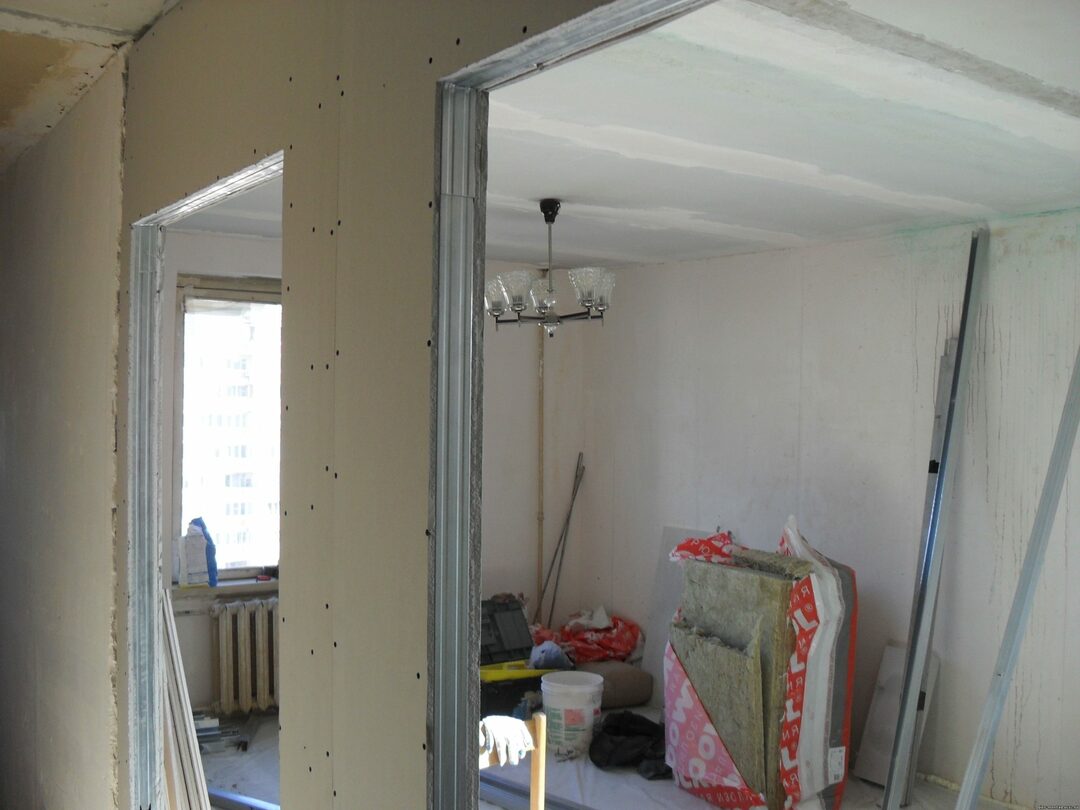
It is necessary to display the surfaces of the pledged area. The guides must be installed at a distance of 12.5 mm from the edge. This distance should take into account the thickness of the gypsum board sheet. Then you need to install the cross members from the profile scraps at a distance of 60 mm. You will get a frame to which the sheets of drywall will be attached. The gaps can be filled with insulation, which will provide the required level of sound insulation.
It is more correct to use whole sheets of dry plaster, but if you wish, you can do with separate fragments. But do not forget that they need to be joined only at the locations of the crossbars.
For the formation of high-quality joints, an edge plane is required. With its help, the chamfer can be removed at an angle. Such joints are the easiest to seal up with high quality.
In order to cut out solid fragments from the gypsum board, you will need a knife with a reinforced blade. Before cutting the material, markings must be applied to its top layer. Next, the sheath of the sheet is cut along this line. After that, the plate is broken, after which it remains only to cut the cardboard layer from the back side.
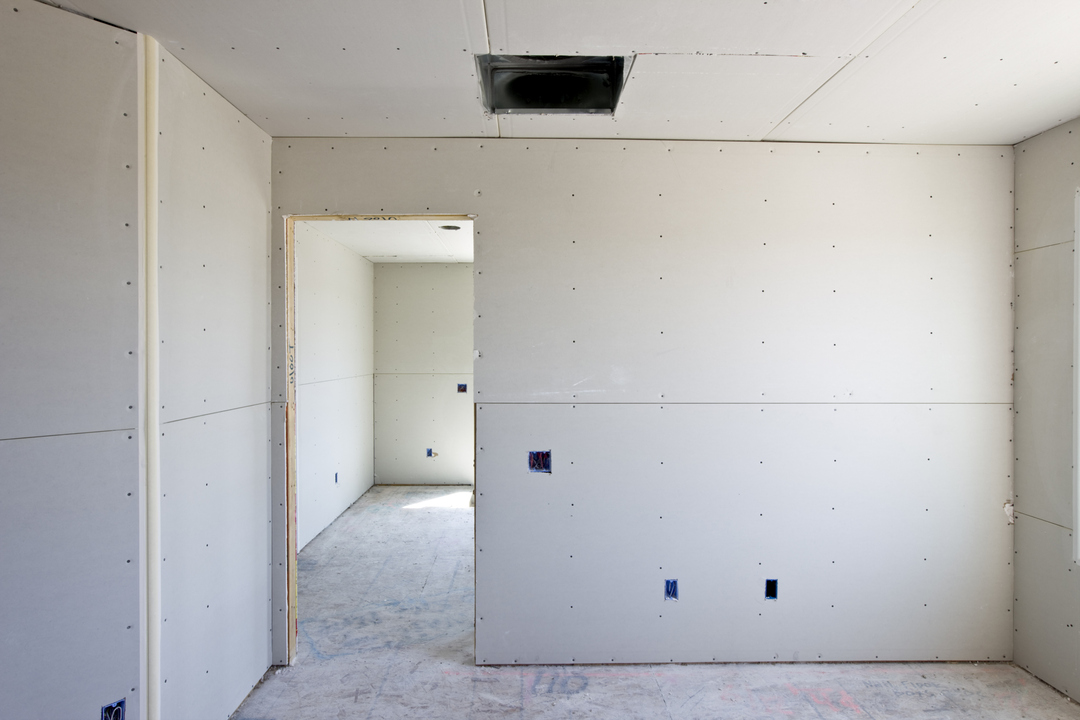
The next step - drywall is applied to the frame and screwed with self-tapping screws at intervals of 20-25 cm. It is necessary to screw in the screws without undue effort so as not to damage the material shell. Further, the seams between the elements of the gypsum board are sealed - in case the cladding was not mounted from a single piece.
For finishing, you will need a primer mixture, putty and fiberglass reinforcing tape. We process the seams with a primer, fill them halfway with plaster mortar and glue the tape, pressing it into the plaster. Next, putty the sheet over the entire area and leave it for finishing.
Conclusion
Now you know how to make a doorway free from the canvas aesthetic and functional. Such work can be done by hand. See the photo for the options for such work.



